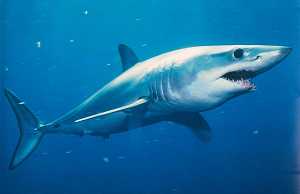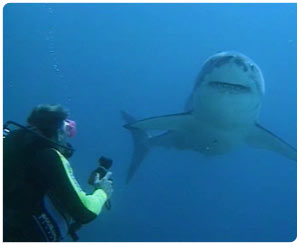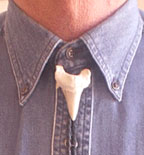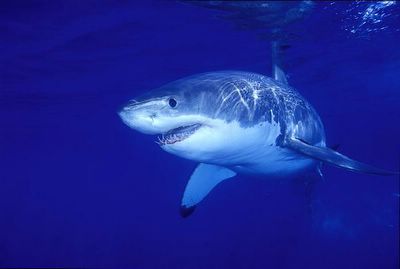The great white shark in school
MURRIETA ---- Some parents might have been alarmed Wednesday when their child came home excitedly describing how fun it was to pet a real shark at Tovashal Elementary School.While the story is true ---- about 100 of the school's kindergarten students did use two fingers to feel the rough texture of a swell shark's skin ---- the fish was only about 1 foot long, it's known to be harmless to humans, and the petting was done under the careful supervision of Aquarium of the Pacific officials.
With oohs and ahhs, students also touched sea stars, anemones and other marine inhabitants as part of the aquarium's mobile tidepool exhibit, driven to the school in a large truck as one part of an hourlong presentation teaching the students about ocean animals.
While it wasn't quite a trip to Sea World, it was pretty darn close.With a replica of a 16-foot elephant seal and a 22-foot Great White Shark looming in the background, presenter Lori Perkins used videos and props to teach the students about ocean animals and their traits.At one point, two student volunteers put their hands in ice-cold water. One student's hand was wrapped with a glove filled with blubber; the other student's hand was bare.
This example quickly taught the two student volunteers as well as the audience why blubber is an important trait for many ocean animals to stay warm in the cold sea.Other parts of the presentation included colorful videos from places such as the Pacific Ocean-based islands of Palau, known for bountiful coral reefs and diverse marine life.Students were also treated to a presentation on whales, and were shown videos of whales whipping the two lobes of their tails ---- which the students learned are called flukes ---- up over the water as the large mammals dove through topside waves.
As the images flashed on a large screen, the mesmerizing and unique sound of whale songs echoed through the school's multipurpose room, where most of the presentation took place.When the students were taught about sharks, an inconspicuous box was opened, and to the amazement of the students, who sat silently as they watched, a 22-foot great white shark was blown up with air right before their eyes.
When the generator was done filling the shark replica with air, the creature dwarfed presenter Perkins and rows of young students.While the school's mascot is actually a tiger shark, Principal Terry Olson said the presentation's subject was a coincidence.
She said school officials often seek ways to bring unique educational opportunities to the campus rather than bus students to faraway places, and the presentation was paid for through field trip funds.Perkins said she hopes the presentation not only teaches students about the unique features of ocean animals, but also perhaps sparks the imagination of a few future marine biologists.Certainly some of the students got excited about the presentation.When asked what their favorite part of the program was, a group of 6-year-old boys who had just exited the mobile tide pool exhibit yelled out in unison: "The sharks!"











